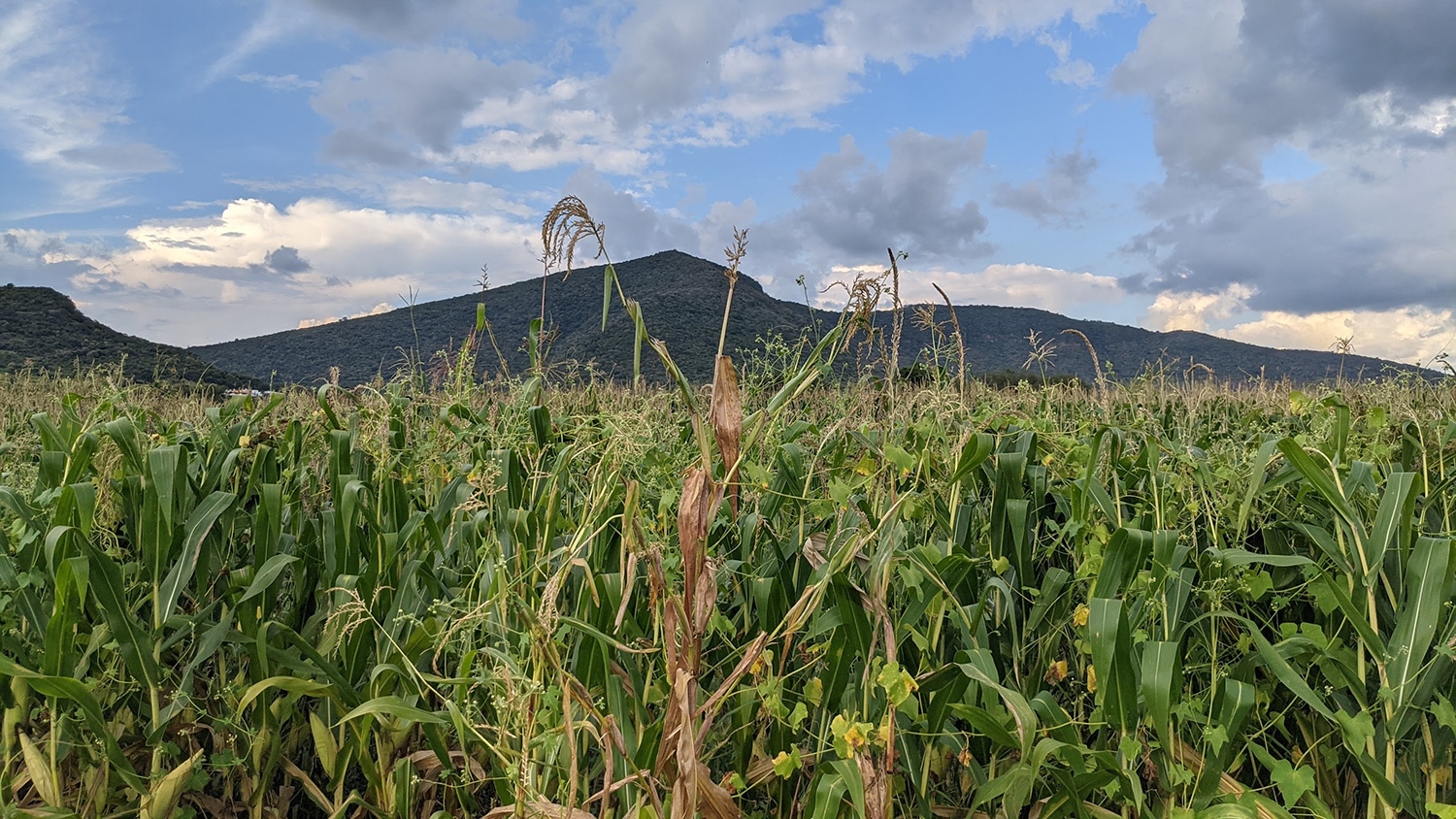2022-06-30 ノースカロライナ州立大学(NCState)
 A Teosinte mexicana plant grows on the border of a commercial cornfield.
A Teosinte mexicana plant grows on the border of a commercial cornfield.
研究者たちは、メキシコ全土の低地と高地で、高地版の遺伝子が存在する膨大な実験を行った結果を示している。その結果、高地版の遺伝子を持つトウモロコシは、その遺伝子を持たない植物よりも1日早く開花することがわかった。一方、低地で栽培された高地版遺伝子を持つトウモロコシは、その遺伝子版を持たない植物よりも1日遅く開花した。
<関連情報>
- https://news.ncsu.edu/2022/06/borrowed-gene-helps-maize-adapt-to-high-elevations-cold-temperatures/
- https://www.pnas.org/doi/10.1073/pnas.2100036119
適応的なteosinte mexicanaの導入がホスファチジルコリンレベルを調節し、トウモロコシの開花時期に関連していること An adaptive teosinte mexicana introgression modulates phosphatidylcholine levels and is associated with maize flowering time
Allison C. Barnes, Fausto Rodríguez-Zapata, Karla A. Juárez-Núñez , Daniel J. Gates, Garrett M. Janzen , Andi Kur, Li Wang, Sarah E. Jensen, Juan M. Estévez-Palmas, Taylor M. Crow, Heli S. Kavi, Hannah D. Pil, Ruthie L. Stokes, Kevan T. Knizner, Maria R. Aguilar-Rangel, Edgar Demesa-Arévalo, Tara Skopelitis, Sergio Pérez-Limón, Whitney L. Stutts, Peter Thompson, Yu-Chun Chiu, David Jackson, David C. Muddiman , Oliver Fiehn , Daniel Runcie, Edward S. Buckler, Jeffrey Ross-Ibarra, Matthew B. Hufford, Ruairidh J. H. Sawers, and Rubén Rellán-Álvarez
Proceedings of the National Academy of Sciences Published:June 30, 2022
DOI:https://doi.org/10.1073/pnas.2100036119
Abstract
Native Americans domesticated maize (Zea mays ssp. mays) from lowland teosinte parviglumis (Zea mays ssp. parviglumis) in the warm Mexican southwest and brought it to the highlands of Mexico and South America where it was exposed to lower temperatures that imposed strong selection on flowering time. Phospholipids are important metabolites in plant responses to low-temperature and phosphorus availability and have been suggested to influence flowering time. Here, we combined linkage mapping with genome scans to identify High PhosphatidylCholine 1 (HPC1), a gene that encodes a phospholipase A1 enzyme, as a major driver of phospholipid variation in highland maize. Common garden experiments demonstrated strong genotype-by-environment interactions associated with variation at HPC1, with the highland HPC1 allele leading to higher fitness in highlands, possibly by hastening flowering. The highland maize HPC1 variant resulted in impaired function of the encoded protein due to a polymorphism in a highly conserved sequence. A meta-analysis across HPC1 orthologs indicated a strong association between the identity of the amino acid at this position and optimal growth in prokaryotes. Mutagenesis of HPC1 via genome editing validated its role in regulating phospholipid metabolism. Finally, we showed that the highland HPC1 allele entered cultivated maize by introgression from the wild highland teosinte Zea mays ssp. mexicana and has been maintained in maize breeding lines from the Northern United States, Canada, and Europe. Thus, HPC1 introgressed from teosinte mexicana underlies a large metabolic QTL that modulates phosphatidylcholine levels and has an adaptive effect at least in part via induction of early flowering time.


